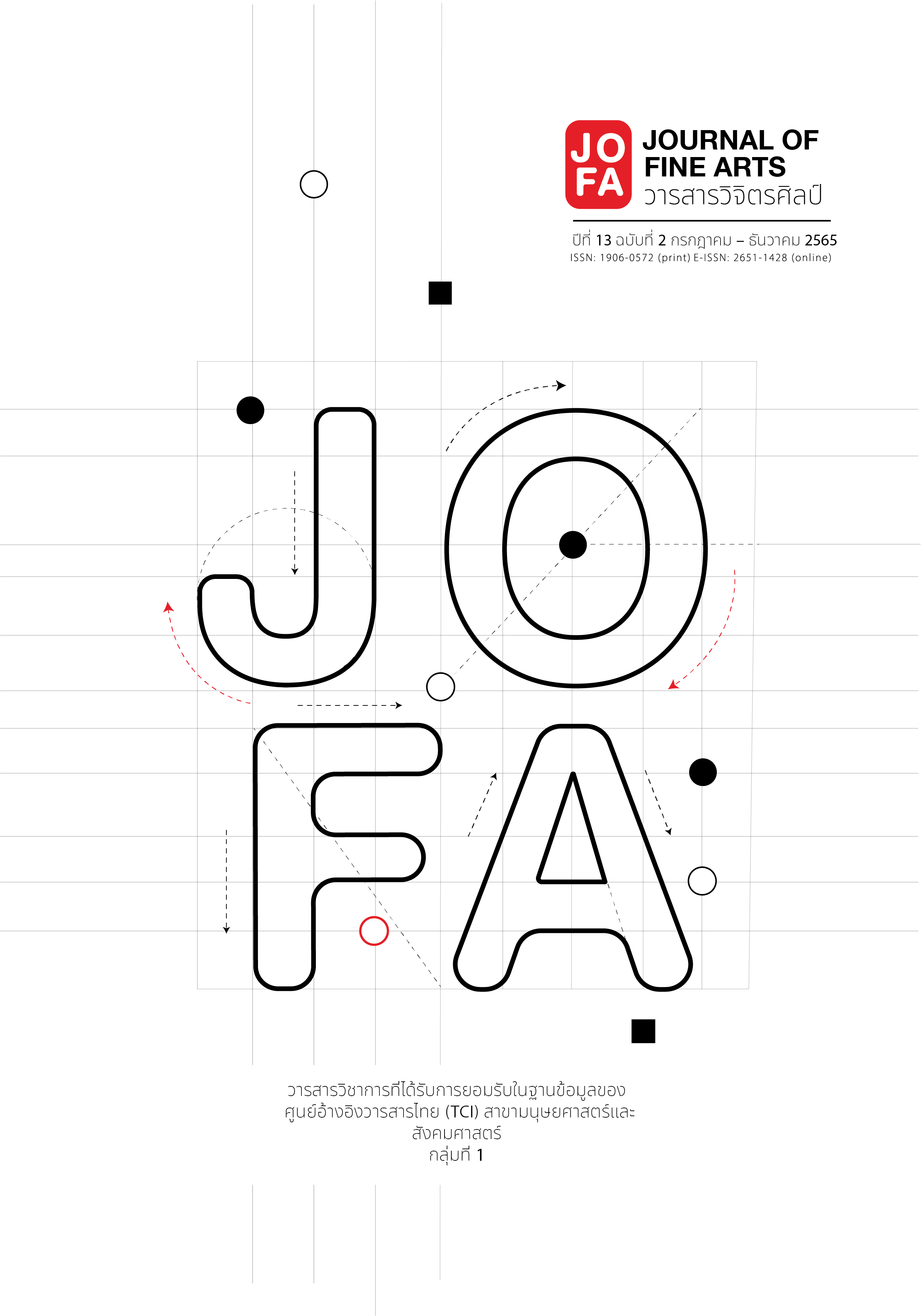The traces of creation on the way of faith through the art of Sculpture
Main Article Content
Abstract
Historical buildings and architectures have the roots on human cultures and civilizations. In ancient time, human beings in Stone Age used tools and instruments as weapons before polishing them beautifully. Later, human beings in Bronze Age created hunting equipment, housings as their shelters, containers, utensils and clothing in their lives. Afterwards, natural phenomena had caused human beings to become interested in mysterious beliefs and religious rites, prayers, sacred places for people hold rites of their communities, dances and body accessories including clothings, masks and body-paints, sculptures and carved symbols or icons decorating such places to protect the places whenever there were natural disasters such as thunders, heavy rains and floods that destroyed agricultural crops that were vital for human lives. All of such beliefs took place when human beings had observed and recorded incidents happening each day until people in the first human civilization around 5,000 B.C. in Mesopotamia and Egypt built mausoleums to house preserved corpses or mummies with the belief in the immortality of souls. These peoples built mausoleums as buildings with arch roofs from bricks or stone or hard stone plates as mastabas, such as rock catacomb in Beni Hason City. The Romans followed the Greeks and the Egyptians, combined the art styles of the two peoples to order to create grand arts including architectures, paintings and sculptures that are unique. Extravagant Roman arts reflect the interests in fighting and law of the Romans. The stone architects as arches, vaults and corbels allowed the Romans to build extravagant architectures. Meanwhile, Asia has India and China have great numbers of populations and many ancient architectures that reflect the relationship between human beings and eastern way of life that affect religious and cultural beliefs. Thus, it is necessary to look at the origin that is related to each ancient architecture that I, the researcher, am interested in until I have created this creative research work with academic content concerning the memories of human beings reflecting beliefs and faiths through architectural symbols that manifest the stories through materials as rocks, wood, cement, clay and metal used for building architectures in the unique style of each era.
Article Details

This work is licensed under a Creative Commons Attribution-NonCommercial-NoDerivatives 4.0 International License.
References
Earthtrekker. “Through the Doorway.” Earthtrekker. Accessed January 4, 2018. https://www.earthtrekkers.com/myanmar-17-amazing-photos/through-the-doorway-2.
Falconer, J. and Invernizzi, L. Burmese Design & Architecture. Singapore: Periplus, 2000.
Fickr. “Palace Beijing China.” Fickr. Accessed January 6, 2018. https://www.pinterest.com/pin/138063544796940854.
Gettyimages. “Yan Gyientry Temple Bagan.” Gettyimages. Accessed January 4, 2018. https://www.gettyimages.com/photos/dhamma-yan-gyi-temple.
Hugchiangkham. “Chon Chāttiphan Lāhū Mūsœ̄. [Lahu Village Chiang rai Province].” Hugchiangkham. Accessed January 15, 2020. https://cmu.to/WMvot.
Maka, P. “Rīwio Wat Ton Kawēn. [Indrawat Temple Chiang Mai Province].” Painaidii. Accessed December 20, 2017. http://www.painaidii.com/review/112342/wat-tonkain-50230/lang/th.
Manoelwilliarn. “Temples of Bagan Myanmar.” Manoelwilliarn. Accessed January 4, 2018. https://www.pinterest.com/pin/215258057169044482/.
Nongnit.“Thai-sprit house.” Nongnit. Accessed January 6, 2018. http://www.nongnit.net/thai_spirit_house4.html.
Oranratmani, R. Rūpbǣp Bānrư̄an Khō̜ng Klum Chāttiphan Nai ʻUsākhanē. [Home styles of ethnic groups in Southeast Asia].1st ed., Chiang Mai: Chiang Mai University, 2013.
Pinterest. “Dhamek stupa india.”Pinterest.Accessed December 4, 2017A. https://www.pinterest.com/pin/817403401109934377/.
Pinterest. “Bedse Caves india.” Pinterest. Accessed December 4, 2017B. https://in.pinterest.com/pin/839076974297492161/.
Piyachon, C. Sō̜radok Khrư̄ang Din Phao Thai Tukkatā Læ Pratimākam. [Heritage of Thai pottery, dolls and sculptures]. Bangkok: Muang Boran, 2001.
Tutorialto. “Padang House.” Tutorialto. Accessed December 31, 2017. https://www.pinterest.com/pin/769060073849860296.
Varlord. “Borobudur.” Brainly. Accessed December 20, 2017. https://brainly.co.id/tugas/2544575.


